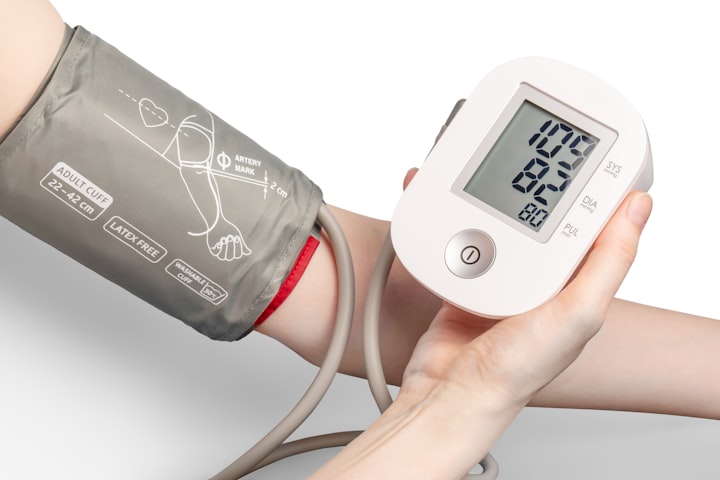Best sport for Blood pressure
choose appropriate sport for you

Engaging in regular physical activity is beneficial for managing blood pressure. While any form of exercise can be helpful, some sports are particularly effective in promoting cardiovascular health and blood pressure control. Here are a few sports that can be beneficial for individuals looking to manage their blood pressure:
1. Swimming: Swimming is a low-impact, full-body workout that places minimal stress on the joints. It helps improve cardiovascular fitness, strengthen muscles, and reduce blood pressure.
2. Cycling: Cycling is a great aerobic exercise that can be done outdoors or indoors on a stationary bike. It helps improve heart health, strengthen leg muscles, and promote overall cardiovascular fitness.
3. Tennis: Tennis is a fast-paced sport that involves intervals of high-intensity activity and short periods of rest. It helps improve cardiovascular endurance, build strength, and maintain healthy blood pressure levels.
4. Basketball: Basketball involves running, jumping, and quick changes in direction, making it an excellent cardiovascular workout. Regular basketball sessions can help lower blood pressure and improve overall fitness.
5. Hiking: Hiking is a great way to enjoy the outdoors while getting exercise. Walking uphill and navigating uneven terrain helps strengthen the heart, lower blood pressure, and improve overall fitness.
Remember, before starting any new exercise routine, it's important to consult with a healthcare professional, particularly if you have any pre-existing health conditions or concerns. They can provide personalized advice and guidance based on your specific needs.
Let us have some historical expression
- Early Observations: In the early 20th century, researchers began to notice that individuals who engaged in regular physical activity, particularly endurance activities like running and cycling, tended to have lower blood pressure levels compared to sedentary individuals.
- Research and Recommendations: In the 1970s and 1980s, large-scale studies were conducted to explore the effects of exercise on blood pressure. The landmark study called the "Framingham Heart Study" found that regular physical activity was associated with lower blood pressure levels, and the more intense the exercise, the greater the reduction in blood pressure.
- Exercise Guidelines: As a result of these findings, various organizations, such as the American Heart Association (AHA) and the World Health Organization (WHO), developed exercise guidelines that recommend regular physical activity for the management of blood pressure. These guidelines emphasize the importance of engaging in moderate-intensity aerobic exercise for at least 150 minutes per week or vigorous-intensity aerobic exercise for 75 minutes per week, along with muscle-strengthening activities at least two days per week.
- Ongoing Research: Since then, ongoing research continues to explore the relationship between exercise and blood pressure. Studies have shown that regular physical activity can not only help lower blood pressure but also improve overall cardiovascular health, reduce the risk of heart disease, and enhance overall well-being.
- In conclusion, the understanding of the benefits of exercise on blood pressure has grown over time. Today, regular physical activity is widely recognized as an important component of a healthy lifestyle, and a variety of sports and exercises can be effective in managing blood pressure levels.
recommendation for blood pressure
It's always best to consult with a healthcare professional for personalized advice. That being said, here are some general recommendations for managing blood pressure:
1. Engage in regular physical activity: Aim for at least 150 minutes of moderate-intensity aerobic exercise or 75 minutes of vigorous-intensity aerobic exercise per week. This can include activities such as brisk walking, cycling, swimming, or dancing. Regular exercise helps improve cardiovascular health and can help lower blood pressure.
2. Maintain a healthy weight: Losing excess weight, if necessary, can have a positive impact on blood pressure. The combination of regular exercise and a balanced diet can help achieve and maintain a healthy weight.
3. Follow a balanced diet: Adopt a diet that is rich in fruits, vegetables, whole grains, lean proteins, and low-fat dairy products. Reduce your intake of sodium (salt) and limit the consumption of processed and packaged foods, which can be high in sodium. Consider adopting the Dietary Approaches to Stop Hypertension (DASH) eating plan, which emphasizes fruits, vegetables, whole grains, lean proteins, and low-fat dairy products while limiting sodium intake.
4. Limit alcohol consumption: Excessive alcohol consumption can raise blood pressure. If you choose to drink alcohol, do so in moderation. The AHA recommends limiting alcohol intake to no more than one drink per day for women and two drinks per day for men.
5. Quit smoking: Smoking can contribute to high blood pressure and increase the risk of heart disease. Quitting smoking can have a significant positive impact on blood pressure and overall health.
6. Manage stress: Chronic stress can contribute to elevated blood pressure levels. Find healthy ways to manage stress, such as practicing relaxation techniques, engaging in hobbies, spending time with loved ones, or seeking professional help if needed.





Comments
There are no comments for this story
Be the first to respond and start the conversation.